For most people in the modern world, our first encounter with monkeys is via the television, the internet or books. When asked to picture a monkey, we all imagine a monkey eating a banana, but this is not the full buffet that consists of a monkey's diet.
Monkeys live all over the world, and throughout time, they have become a mainstay in our lives. From art, science, and popular culture, we have all come to know about monkeys before seeing one.
While they are not as closely related to us (humans) as chimpanzees or gorillas, monkeys are related to us and we share a fascinating amount of similarities.
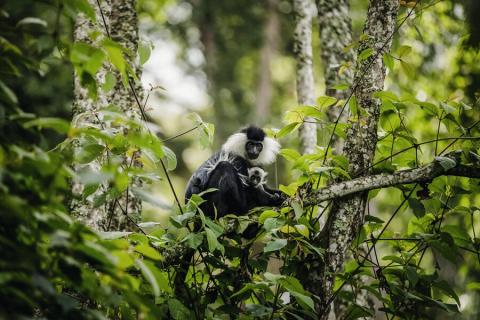
In this article, we'll explore the diet and eating habits of monkeys. We'll take a look at what monkeys eat in the wild so that we can understand them much more than "eating bananas and swinging from branch to branch".
What Do Monkeys Eat?
Monkeys are omnivores with a diet that includes both animal and plant-based foods. Monkeys eat fruits, leaves, flowers, insects, invertebrates, small animals or birds. In as much as monkeys are omnivores, their diet is mostly plants and animal matter makes up a small percentage - usually not more than 20%.
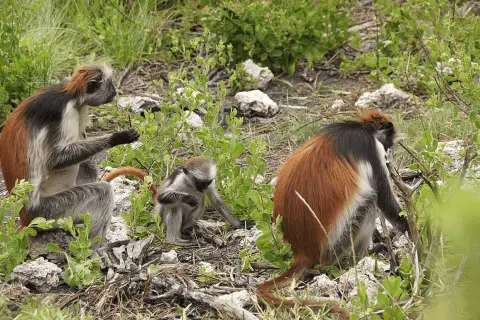
There are more than 200 monkey species in the world, and their diets are as varied as the monkeys' behaviour, sizes, and habitats. Even the same species of monkey will have a different diet in different environments due to the availability of different food sources.
Monkeys in the wild have a different diet from those in captivity, and what you will see at the zoo is completely different from the monkeys you will see in the wild.
What Monkeys Eat In The Wild.
Monkeys in the wild are still omnivores eating a lot of plants and small animals in their habitat. In the wild, monkeys eat leaves, flowers, shoots, fruits, insects and rodents among others.
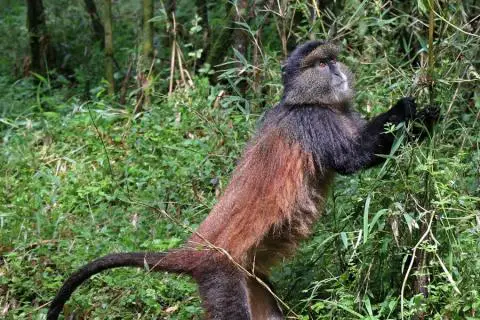
In various environments, these food sources are present in different amounts. Forests tend to have more fruits than savannahs, and monkeys adapt to their environments to eat the available food.
Monkeys are very social primates that live and feed in groups, and this plays a vital role in the wild especially since they have to be on alert for predators.
It is worth remembering that while monkeys eat a wide variety of foods, this is still within the restrictions of what exists in their local habitat. Therefore the same monkey species in Kenya might eat differently from those in Tanzania or Uganda.
This is the same way humans have different foods based on environments and what is available. Some communities had fish, while others hunted.
What Monkeys Eat At The Zoo
Monkeys are very adaptable and easily survive in the zoo by eating fruits, leaves, insects, nuts, and sometimes birds. They also eat apples, oranges, carrots, and of course, bananas.
Unlike gorillas and chimpanzees, monkeys in a zoo are much easier to look after. This is why monkeys are very common in zoos all around the world.
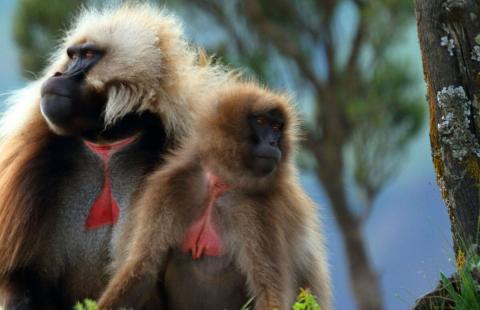
When Monkeys Eat
Monkeys eat multiple times each day, and their feeding patterns differ depending on their species and location. Most monkey species are diurnal and only forage and eat during the day. Generally, monkeys eat 3 to 5 times a day.
Some species are diurnal, which means they are active and eat during the day. Others are nocturnal, which means they are active and eat at night. Some species may eat all day and all night, with phases of activity and rest.
Overall, when monkeys eat, it varies widely, but it is mostly determined by their circadian cycles and the availability of food in their surroundings.
How Much Monkeys Eat
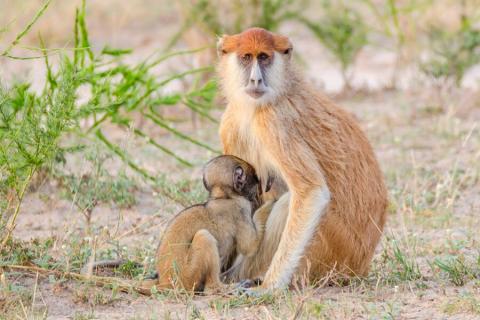
Monkeys are of various sizes and their daily food can range from 100 grams to more than 5 kilograms per day. Given that there are several hundred monkey species, the amount of food they eat is significantly different.
Some species are so small they weigh less than 2 kilograms, while other species consume several kilograms of food per day.
All in all, every monkey species eats a different amount of food depending on how much it needs to survive.
Do Monkeys Eat Bananas In The Wild?
While we all enjoy seeing a monkey eat bananas in the zoo, monkeys in the wild do not eat bananas. Bananas are domesticated plants that do not grow in the wild, and thus almost all wild monkeys have never had a taste of bananas.
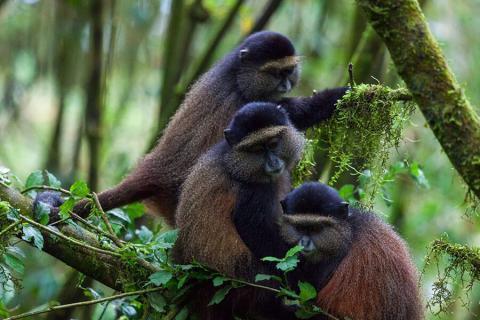
Monkeys that live close to human populations can venture into human settlements and might eat some bananas, but that happens in very few places.
Some monkeys, especially baboons that live near roads are sometimes given bananas by people passing by. The rules of feeding wildlife are different in each country and this could be bad. Generally, we advise that you don't feed wild animals (including monkeys) because you just can't know how that can affect them.
Because of the high energy density of bananas, too many bananas are thought to lead to diabetes in monkeys. While this is not a major concern in the wild, some zoos have stopped or greatly cut back on giving bananas to monkeys.
What Kills & Eats Monkeys?
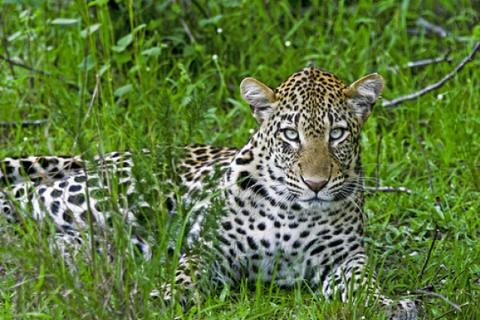
The small size of many monkey species can be disadvantageous, especially in the wilderness. In Africa, monkeys can be preyed on by lions, leopards, crocodiles, hyenas, African wild dogs, and more. Other primates, such as chimpanzees also hunt and eat monkeys.
Young monkeys are at a higher risk because they don't climb or flee so well from dangerous situations.
In some places, humans also hunt and kill monkeys as bushmeat.
Final Thoughts
Monkeys are interesting, not just for their playfulness but for their close relationship with us humans and other intelligent apes. The adaptability is impressive and much like our human adaptability.
While in general, monkeys are not facing imminent extinction risk, some species are under threat from the destruction of their habitat.
We hope you found this interesting and enjoyed learning about this little side of monkeys.
